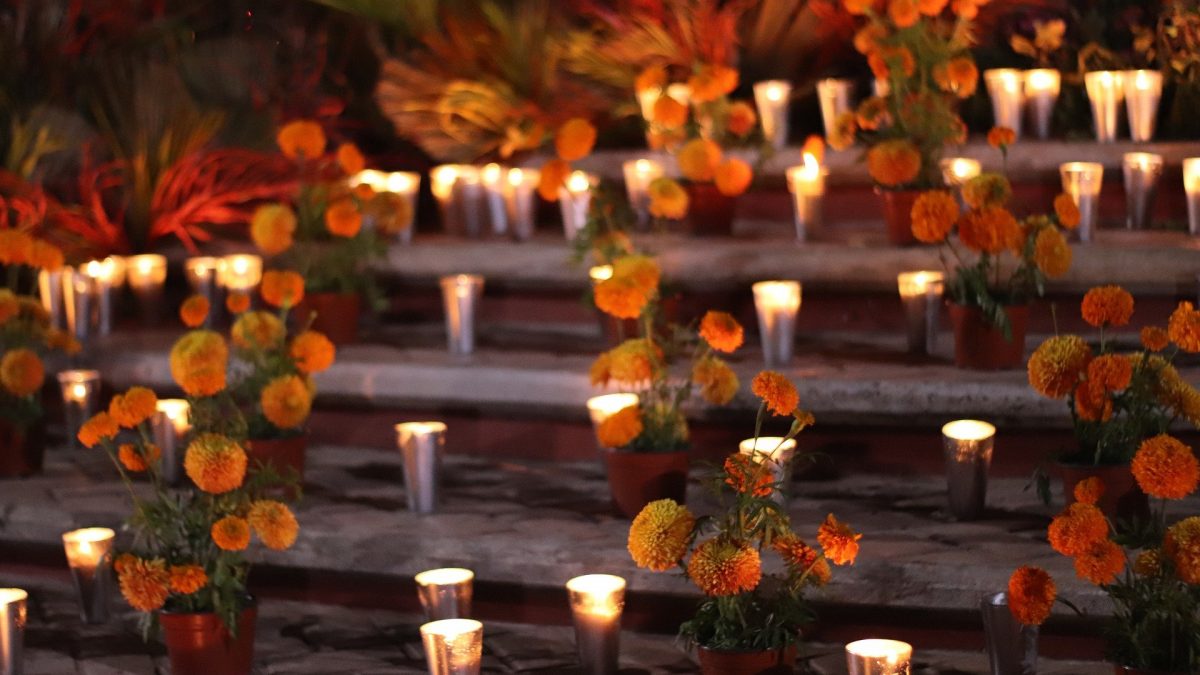Day of the dead: More than just a tradition
Day of the dead: More than just a tradition

Although in many countries there are special days to celebrate the dead, Mexico is internationally recognized for celebrating every year, those who are no longer with us in a very characteristic way on November 1st and 2nd. In 2008, UNESCO named this celebration an Intangible Cultural Heritage of Humanity!! If you are from Mexico, you must already be very used to colors, “pan de muerto” and unrivalled altars but, do you know how this tradition was born?
ORIGIN
The origin of this celebration began more than 500 years ago, as it was believed that when people died they began a journey to the Miclan, known as the underworld and once they got there they had to offer gifts to Mictlantecuhtli (lord of the dead) and Mictecacíhuatl (lady of the the dead). Afterwards, the deceased traveled the underworld for 4 years, crossing 9 levels full of obstacles until they reached the place of eternal rest.
With the arrival of different cultures to Mexico, a mixture of customs, religions, and legends crafted the Day of the Dead that we know and celebrate today.
CATRINA
This figure depicting death was born more than 100 years ago from the talent of the Mexican artist José Guadalupe Posada, who tried to draw Mictecacíhuatl, lady of the dead and it has become the highest representation of the Day of the Dead at a national and international level.
PAN DE MUERTO
You won’t believe!! The preparation of “bread of the dead” began with the arrival of the Spaniards… According to some historians, when a princess was offered to the Gods, her beating heart was placed in a container with amaranth and then, whoever led the rite bit her heart in a sign of gratitude to the God. Obviously the Spaniards didn’t love this idea, so they started making heart-shaped bread with blood-simulating sugar. And this is how the sacrifice of people was avoided and the delicious and traditional “pan de muerto” was born.
ALTARS
Depending upon the region, some traditions indicate that altars must have at least 2 levels to represent heaven and earth or up to 7 levels to place offerings, images of saints, favorite things of the deceased, among other things. Of course, what can’t be missing at an altar besides “pan de muerto”, are the bright orange flowers of cempasúchil, colorful decorations made with very thin paper called “papel picado”, a dish that the family member enjoyed in life and his or her picture.
The altars represent hope for the relatives of the deceased, who prepare offerings waiting for their loved one to visit them at night and see how much they love and miss him or her.
No doubts!! Mexico is a magical country full of traditions which reminds us that the bonds we create on earth with our loved ones are never broken. And you, how do you celebrate the Day of the Dead?
Author: Nerissa Álvarez
Revision: Betzabe Guido
References
Instituto Nacional para el Federalismo y Desarrollo Municipal Gobierno de México. (s/f) Blog Día de Muertos, tradición mexicana que trasciende en el tiempo.
Palma, C. (2018). TRADICIONES MEXICANAS EN EL DÍA DE MUERTOS. National Geographic
Sin autor. (2019). Historia del pan de muerto. Muyinteresante.com
As a result, the medical information provided in the site which you are going to visit may not be appropriate for product use in your country.
